Introduction: Europe’s Budget Adventures Await
Europe is full of incredible landscapes—mountains, rivers, coastlines and historic towns. You don’t need a big budget to enjoy them. We picked 21 places that offer great outdoor experiences without breaking the bank. We looked at costs for food, lodging and transport, plus the variety of things to do and how easy each place is to reach.
Many of these spots are in Eastern or Southern Europe, where prices are lower and crowds are smaller. You’ll also find a few well‑known mountain ranges and islands that offer good value if you plan right. The list counts down from #21 to #1, with each entry giving a short overview and some budget tips. We’ve added natural links to more detailed resources—click them if you want to dive deeper into a specific trip.
#21 Albanian Riviera – Authentic Beaches and Coastal Culture
Overview of the Albanian Riviera
The Albanian Riviera runs along the Ionian Sea in southern Albania. Here, rugged mountains meet clear turquoise water, and small villages dot the hills. Unlike busier Mediterranean coasts, this area stays authentic and unspoiled. In Vlora, where Albania declared independence, you can stroll the seaside promenade. South of the city, the Llogara Pass winds up through pine forests, opening onto views of cliffs and hidden beaches.
Further south, you’ll find the pebble beach of Dhermi, the historic hilltop castle in Himara, and the white sands of Ksamil. Inland sits the UNESCO site of Butrint, with Greek, Roman and Venetian ruins. Because tourism is still growing here, prices remain low. You can swim, hike, explore castles and enjoy fresh seafood—all while keeping your budget in check.
Budget Tips for the Riviera
- Accommodation: Family‑run guesthouses and small hotels start around €20–€30 per night.
- Transport: Buses and shared taxis connect most towns. Renting a car or scooter gives you freedom to explore hidden bays.
- Food: Seafood meals cost less than €10, and local taverns serve grilled meats and salads at similar prices.
- When to visit: Go in May–June or September for warm weather and fewer tourists.
Further Reading
If you’d like an independent journey along this coast, look into a self‑guided coast road trip along the Albanian Riviera. This resource shows how to plan your own route and find accommodations.
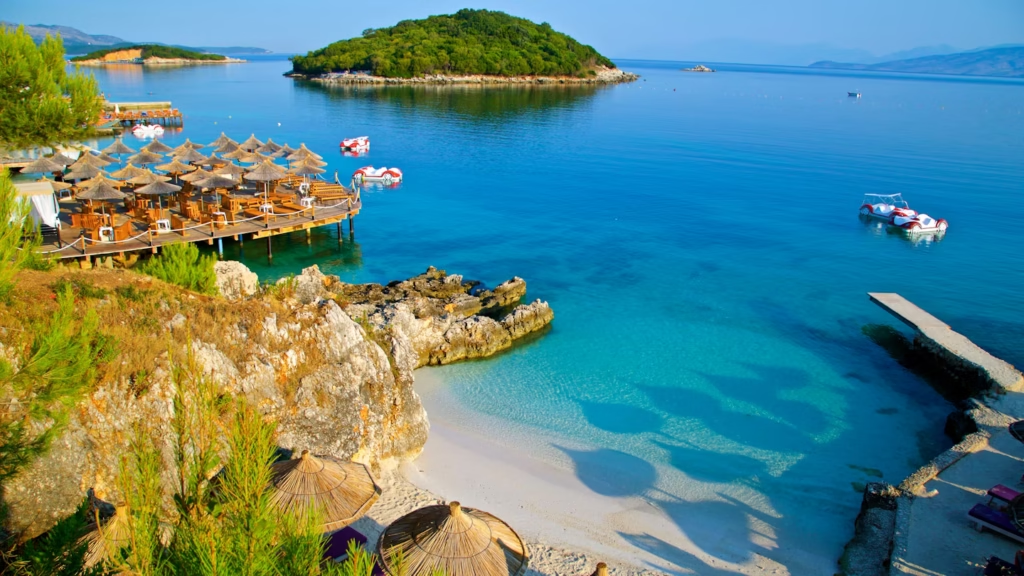
#20 Rila & Pirin Mountains, Bulgaria – Budget Hiking and High Peaks
What to Expect
The Rila and Pirin Mountains in Bulgaria offer some of the highest peaks in the Balkans. Trails lead to glacial lakes and sharp ridges. The Seven Rila Lakes trail is a favourite day hike; a chairlift takes you partway up. In Pirin, you can summit Mount Vihren at 2 914 m or explore the pine forests around Bansko. Prices are low: basic guesthouses in nearby towns cost €15–€25, and meals are cheap.
Budget Tips
- Accommodation: Mountain huts and small hotels are affordable. Bring cash for payment.
- Transport: Public buses run from Sofia to Borovets (for Rila) and Bansko (for Pirin). Renting a car makes it easier to reach remote trailheads.
- Season: June–September for hiking; December–March for skiing in Bansko.
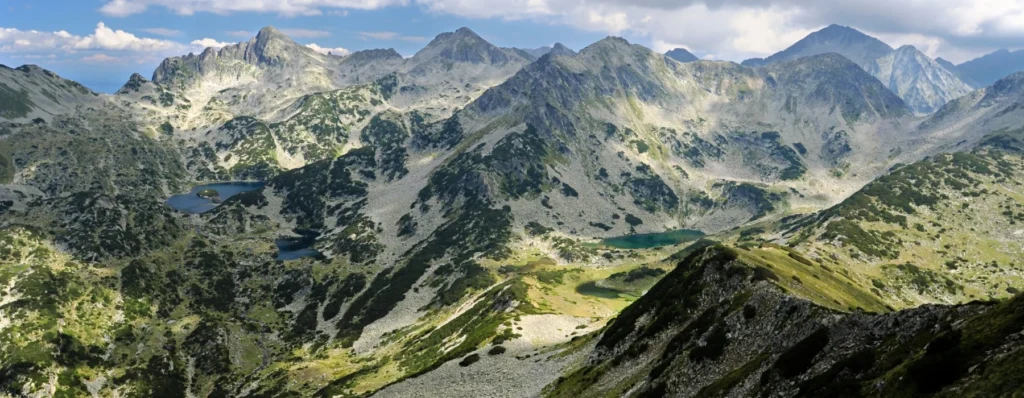
#19 Wild Atlantic Way & Donegal, Ireland – Coastal Trails and Gaelic Culture
Overview
Ireland’s Wild Atlantic Way stretches along the country’s west coast. In County Donegal, you get tall sea cliffs, sandy beaches and lively villages. Slieve League offers one of Europe’s highest cliff walks. Bundoran is popular with beginner surfers. Tory Island is a ferry ride away and feels like stepping back in time. Camping is legal in many spots if you ask permission.
Budget Tips
- Stay: Hostels and B&Bs cost around €25–€35 per person.
- Eat: Pubs serve hearty meals for €10–€15. Live music is often free.
- Travel: Come in spring or autumn to avoid peak prices and enjoy mild weather.
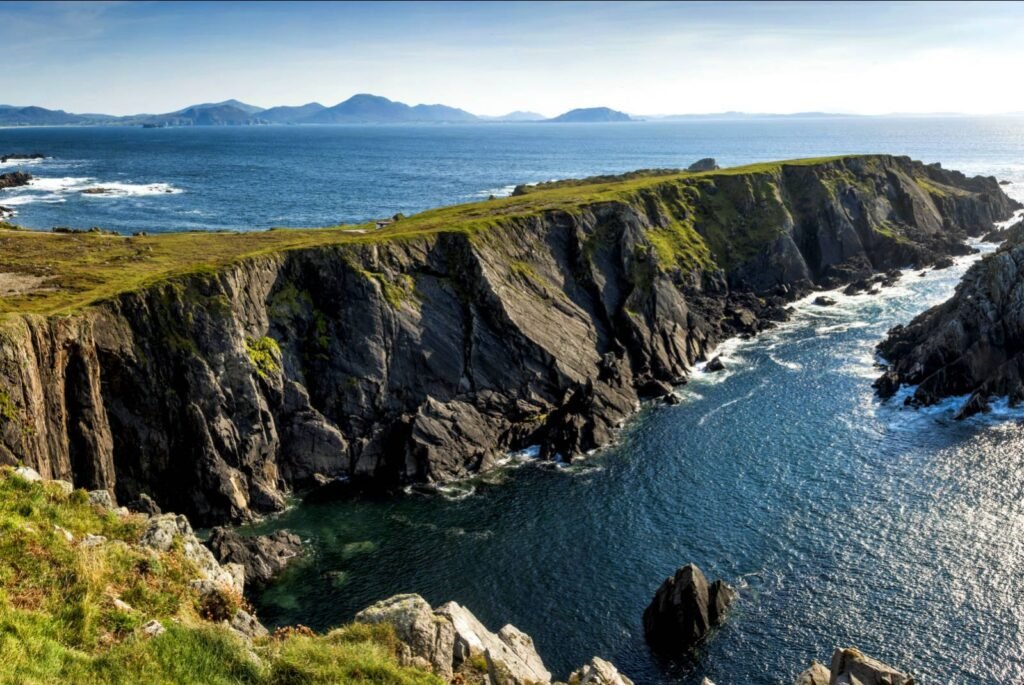
#18 Serra da Estrela, Portugal – Scenic Peaks and Cheese Trails
Overview
Serra da Estrela is mainland Portugal’s highest mountain area. Granite peaks, glacial valleys and small stone villages make it a beautiful hiking destination. In winter, it’s Portugal’s only ski resort. In summer, the hills bloom with wildflowers. Local shepherds produce queijo da serra, a creamy sheep’s cheese you’ll see at every market.
Budget Tips
- Accommodation: Family hotels and rural cottages cost €25–€40.
- Food: Try local cheeses, honey and cured meats—affordable and tasty.
- Transport: A car is useful; buses reach Covilhã and Manteigas but don’t run often.
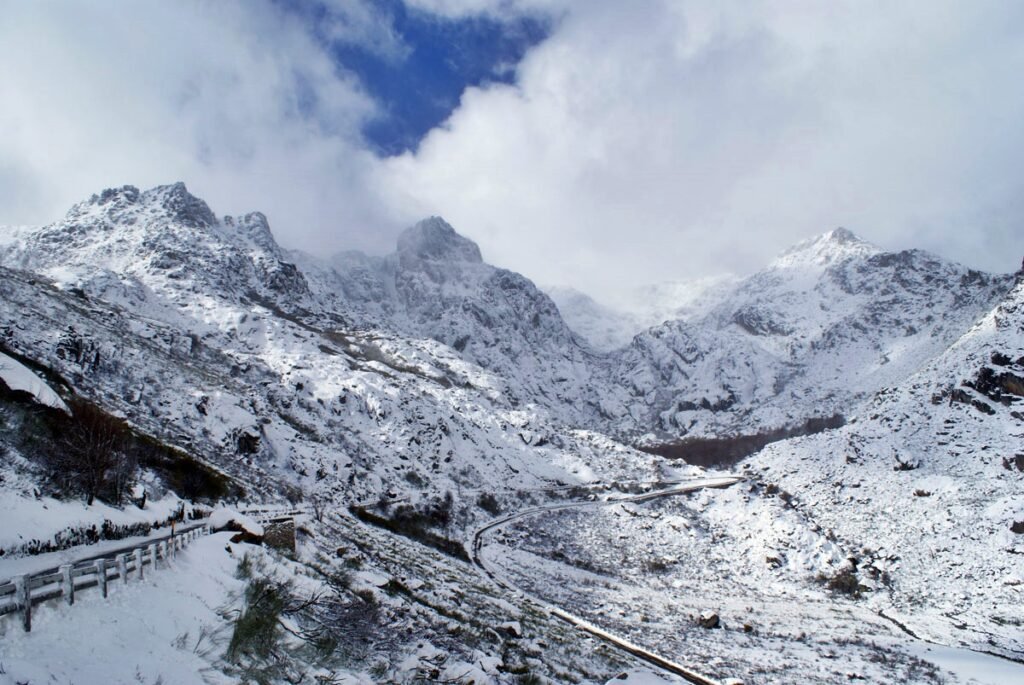
#17 Scottish Highlands, UK – Wild Camping and Dramatic Glens
Overview
The Scottish Highlands are famous for their wild landscapes. You can walk the 154‑km West Highland Way or tackle smaller day hikes near Glencoe and Ben Nevis. Scotland’s right‑to‑roam laws allow wild camping almost anywhere, as long as you follow “leave no trace” rules. Hostels and bothies (free shelters) help keep costs down.
Budget Tips
- Gear: Bring waterproof layers; weather changes fast.
- Planning: June and early September offer long days and fewer midges (small biting insects).
- Transport: Trains and buses reach major trailheads; hitchhiking is common in remote areas.
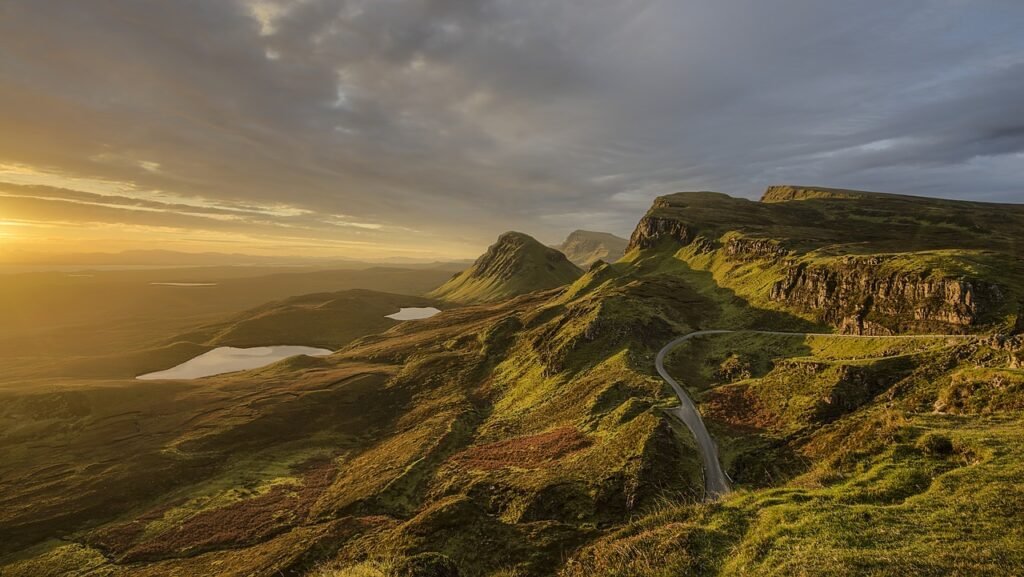
#16 Julian Alps, Slovenia/Italy – Alpine Lakes and Meadow Paths
Overview
The Julian Alps lie on the border of Slovenia and Italy. Lake Bled and Lake Bohinj are popular bases for exploring Triglav National Park. Hiking trails climb to ridges with views of Mount Triglav. You’ll find alpine meadows filled with cows and wildflowers. Mountain huts (called “koča” in Slovene) provide meals and beds for around €20–€30.
Budget Tips
- Transport: Buses from Ljubljana reach the lakes and towns like Kranjska Gora.
- Food: Try jota (bean soup) and štruklji (rolled dumplings) in local restaurants.
- When to visit: Late May to early October for hiking; December–March for skiing.
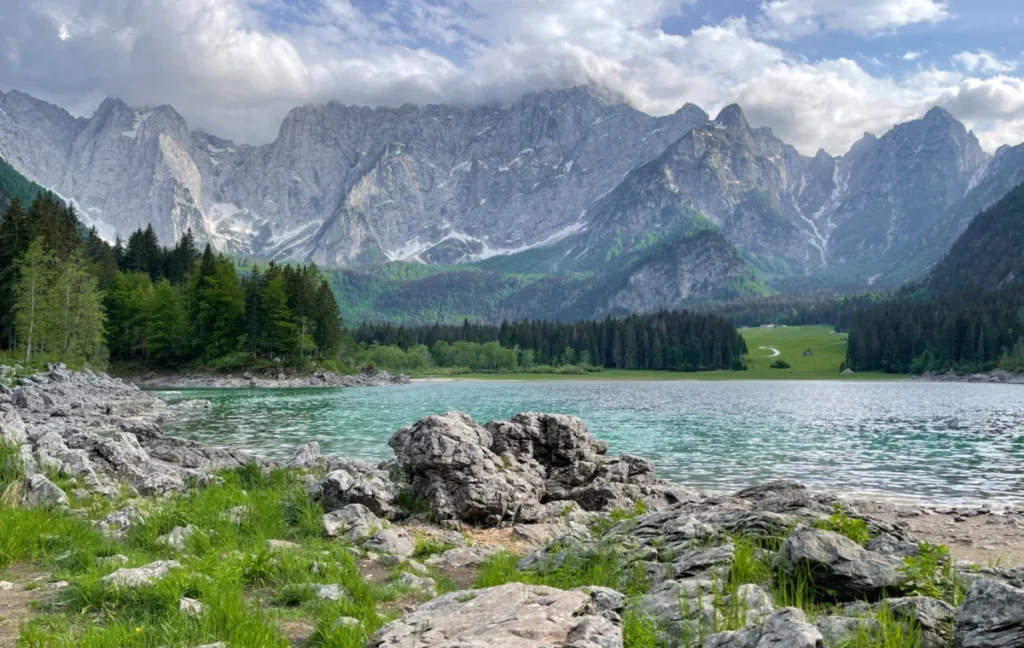
#15 Transylvanian Alps, Romania – Peaks and Old‑World Charm
Overview
Romania’s Făgăraș Mountains, often called the Transylvanian Alps, rise above forested valleys. The ridge trail crosses sharp peaks like Moldoveanu (2 544 m) and Negoiu. Nearby ranges like the Retezat offer limestone formations and glacial lakes. Villages such as Brașov and Sibiu make charming gateways with medieval streets and inexpensive hotels.
Budget Tips
- Accommodation: Campsites and mountain huts cost around €10–€20.
- Transport: Trains from Bucharest reach Sibiu, Brașov and surrounding towns.
- Season: July–September for trekking; winter for snowshoeing and ice climbing.
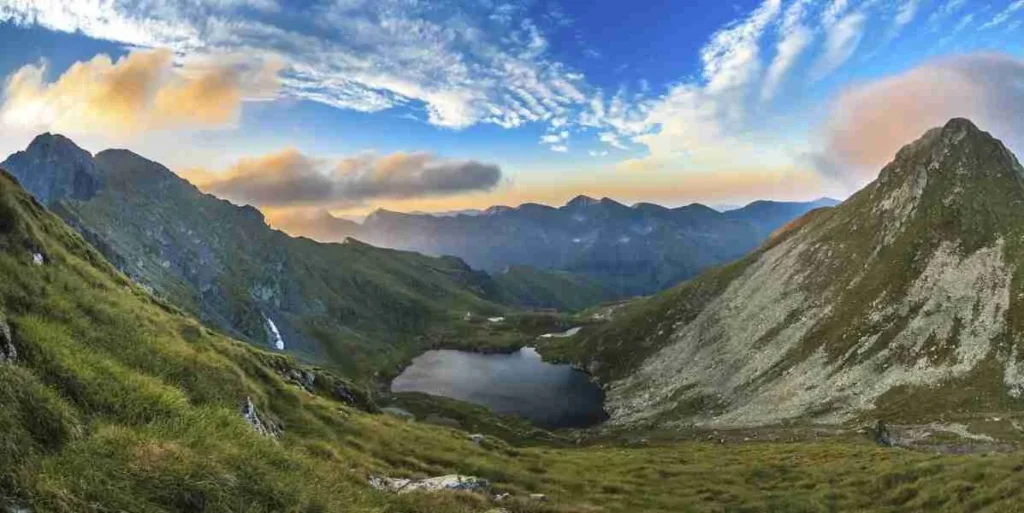
#14 Corsica’s GR20, France – Tough Trails and Stunning Ridges
Overview
The GR20 crosses Corsica from north to south and is known as Europe’s toughest long‑distance trail. Sections of the route include steep climbs, chain ladders and exposed ridges. You don’t have to hike the entire 180 km; many people tackle just the northern or southern half. Mountain refuges cost €15–€25, and camping is cheaper. Food supplies are more expensive on the trail, so bring plenty of snacks.
Budget Tips
- Access: Budget airlines fly to Bastia and Ajaccio. Trains link major coastal towns.
- Season: Mid‑June to mid‑September; avoid July and August for heat and crowds.
- Preparation: Good fitness and careful packing are essential.
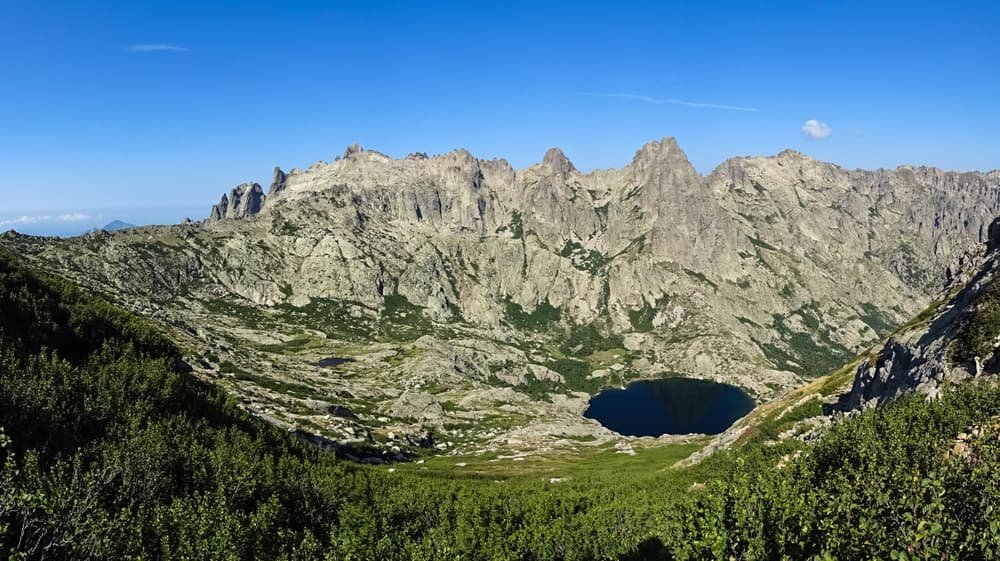
#13 Apuseni & Southern Carpathians, Romania – Caves and Karst Landscapes
Overview
The Apuseni Mountains in western Romania are famous for caves and karst formations. You can tour the Scarisoara Ice Cave or wander through forests rich with wildlife. The Southern Carpathians feature ranges like Piatra Craiului and Bucegi, with limestone ridges and deep gorges. Rural life here moves at a slow pace; villages serve home‑grown food and local wines.
Budget Tips
- Costs: Guesthouses from €15–€25 per night; guided caving tours cost around €20.
- Transport: Rent a car if you plan to visit multiple caves; buses connect bigger towns.
- Best time: June–September, when caves are open and trails are dry.
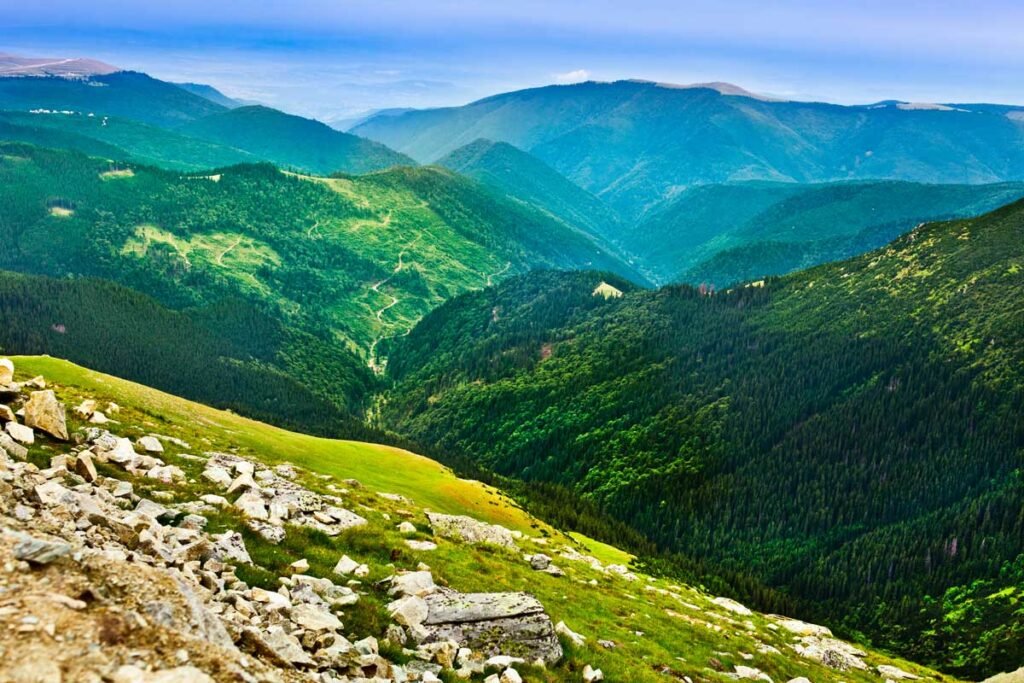
#12 La Palma & Caldera de Taburiente, Canary Islands – Volcanic Walks and Mild Weather
Overview
La Palma is one of Spain’s Canary Islands and a paradise for hikers. The Caldera de Taburiente National Park has a huge crater with trails leading to waterfalls and pine forests. Another path along the Cumbre Vieja ridge passes volcanic cones and lava fields. Because La Palma is in the Atlantic, you can hike year‑round; winter is cool but rarely cold.
Budget Tips
- Stay: Rural cottages and small hotels start around €35.
- Eat: Local fish and “papas arrugadas” (wrinkled potatoes) are cheap and tasty.
- Transport: Rent a car to reach trailheads; buses run between major towns.
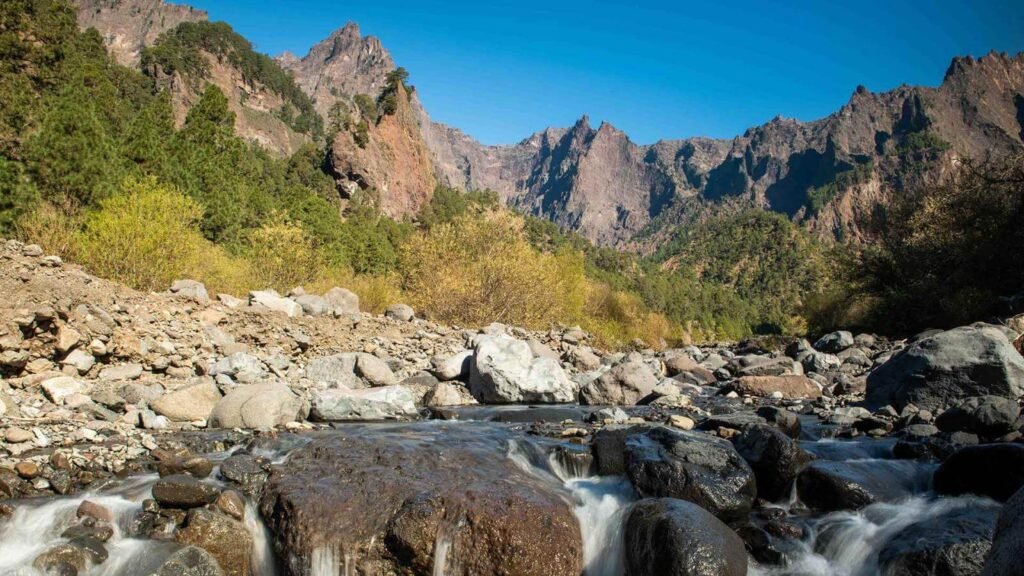
#11 Zagori & Vikos Gorge, Greece – Stone Bridges and Deep Canyons
Overview
Zagori in northwest Greece is a region of 46 stone villages. Old arched bridges cross rivers, and paths connect the settlements. The Vikos Gorge runs through the middle and is one of the world’s deepest relative to its width. Hike along the rim for breathtaking views or descend to the riverbed. Stay in guesthouses built from local stone.
Budget Tips
- Costs: Rooms start at €25–€40; meals with goat cheese and pies cost around €8.
- Transport: Car rental is helpful; buses run to Ioannina, the nearest city.
- Season: Spring and autumn for comfortable temperatures and fewer visitors.
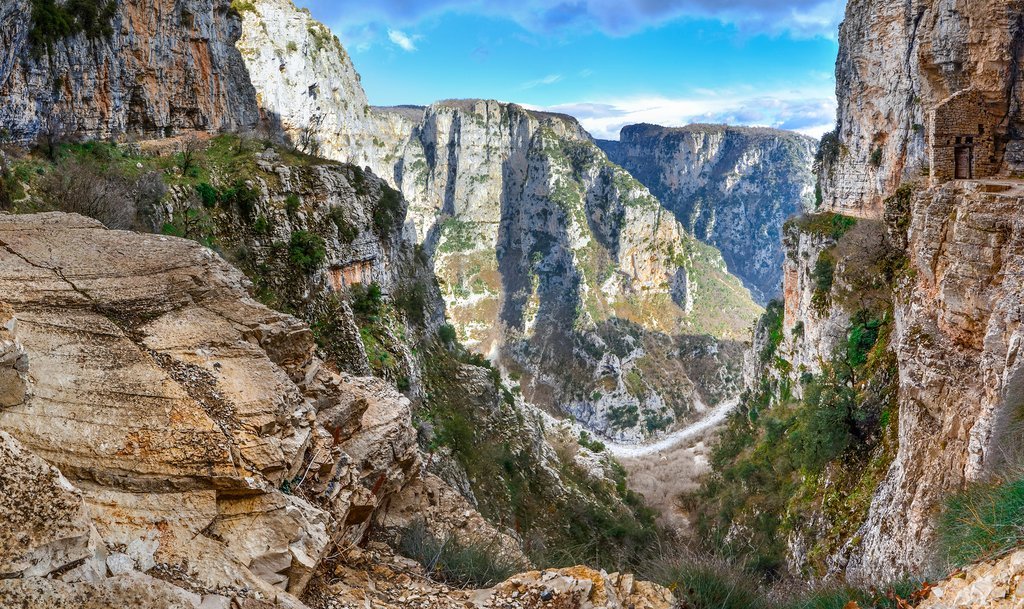
#10 Peneda‑Gerês National Park, Portugal – Hidden Villages and Waterfalls
Overview
Peneda‑Gerês is Portugal’s only national park. It’s filled with granite cliffs, oak forests and mountain streams. Old Roman roads cross the park, leading to ancient stone granaries and shepherd huts. Popular spots include the Arado waterfall and the viewpoint of Pedra Bela. Small villages like Soajo sell handmade corn bread and herbal teas.
Budget Tips
- Lodging: Rural houses and guesthouses cost €20–€30.
- Transport: Buses reach some villages, but a car makes exploring easier.
- What to pack: Bring sturdy shoes for rocky paths and a swimsuit for natural pools.
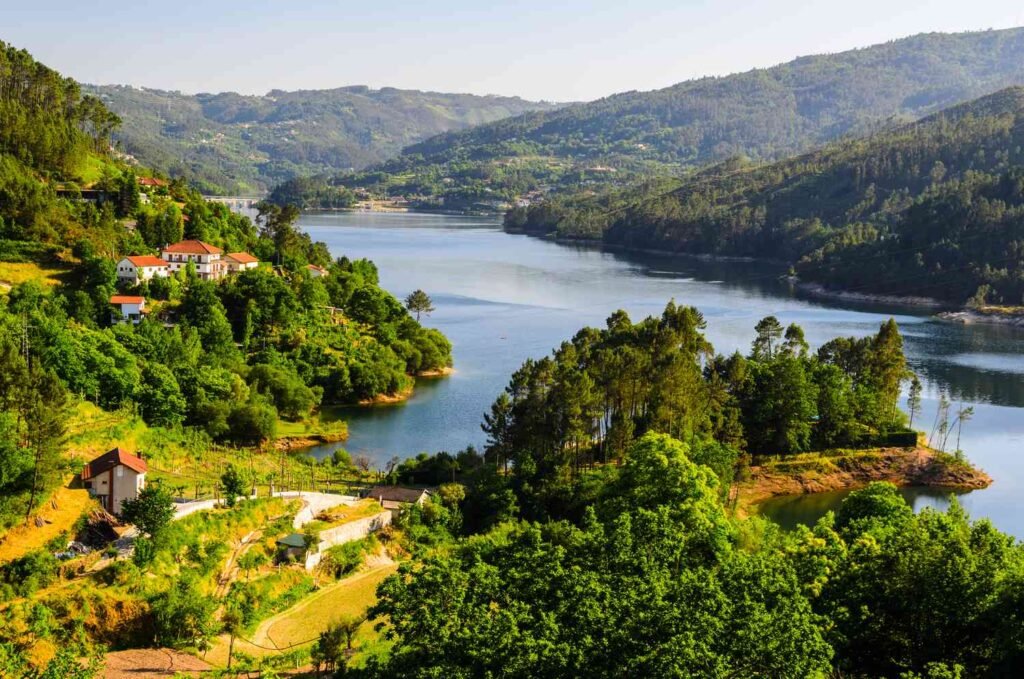
#9 Benjë Thermal Baths & Vjosa River, Albania – Hot Springs and Wild Waters
Overview
In southern Albania, near the town of Përmet, you’ll find the Vjosa River and the Bënjë hot springs. Up Albania’s trip notes describe how this area blends history, nature and wellness: explore the UNESCO‑listed city of Gjirokastra, then head to the Vjosa, one of Europe’s last free‑flowing rivers. Soak in warm pools near the Ottoman bridge at Bënjë, surrounded by cliffs and trees. Nearby, the village of Leusa has a church dubbed the “Albanian Sistine Chapel.”
Budget Tips
- Stay: Guesthouses in Përmet and nearby villages cost €20–€25.
- Activities: Rafting trips on the Vjosa are around €50; the hot springs are free.
- Add‑ons: Combine this region with a visit to UNESCO cities using a cultural and wellness tour in the Përmet and Vjosa Valley.
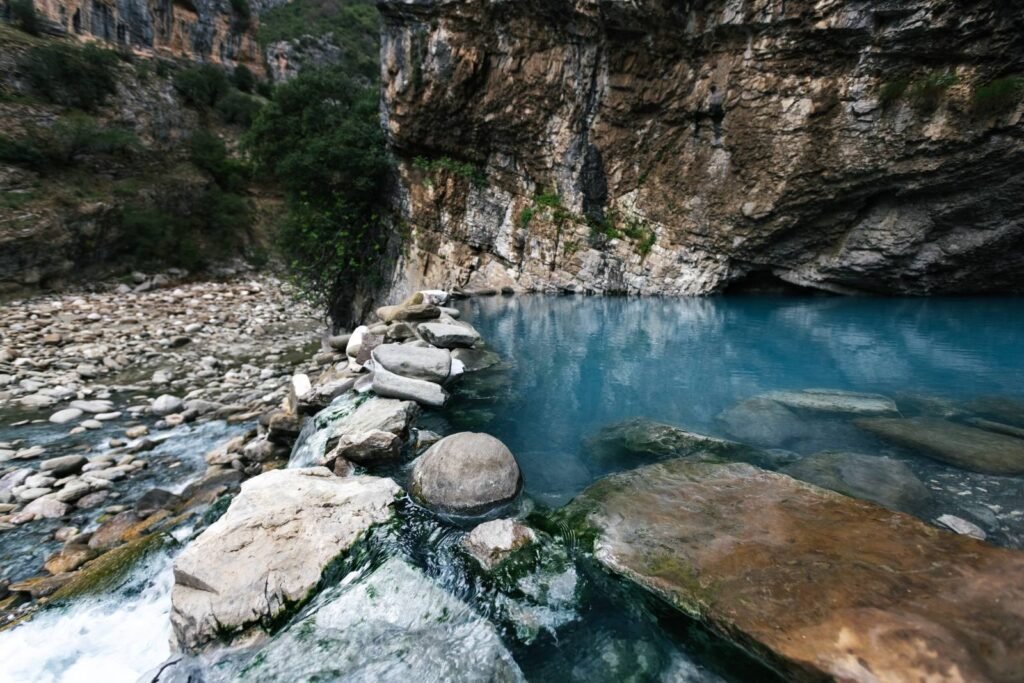
#8 Soča Valley, Slovenia – Emerald Rivers and Adventure Sports
Overview
The Soča River is famous for its clear, emerald colour. Along its banks, towns like Bovec and Kobarid offer rafting, kayaking and zip‑lining. Trails lead to waterfalls and World War I memorials. You can also follow sections of the Alpe Adria Trail, which starts at the river’s source. Prices are reasonable: hostel beds from €20 and camping sites from €10.
Budget Tips
- Stay: Campgrounds and hostels in Bovec fill quickly; book ahead in summer.
- Food: Try frika (cheese omelette) and local smoked trout.
- Season: May–September for water sports; October for hiking in autumn colours.
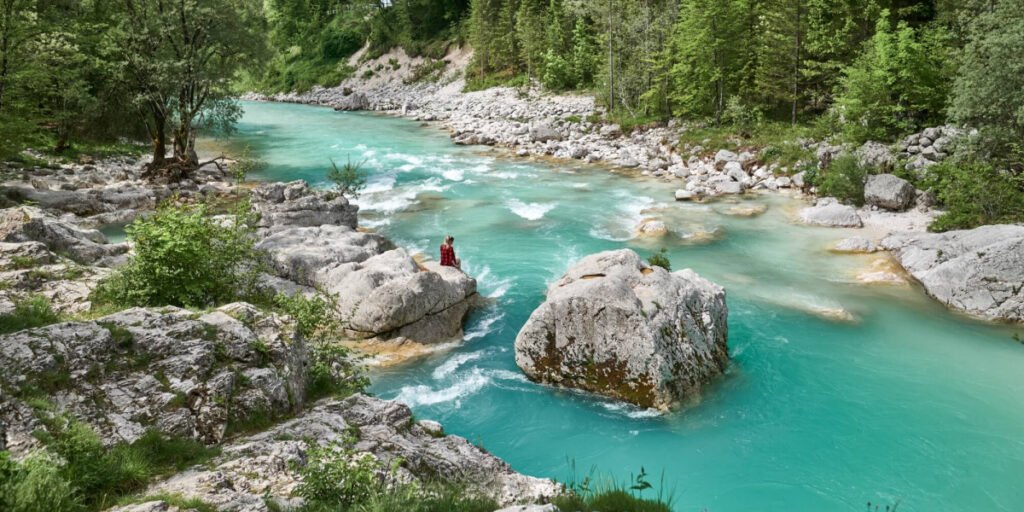
#7 Madeira Levadas, Portugal – Forest Paths and Mountain Views
Overview
Madeira, a Portuguese island, has a mild climate all year. Its network of levadas (small irrigation channels) creates gentle walking paths. The Levada das 25 Fontes ends at a series of waterfalls. The Vereda do Areeiro connects two peaks and offers panoramic views above clouds. Because the routes often follow water channels, they stay shaded and cool.
Budget Tips
- Stay: Hostels and budget hotels in Funchal cost €30–€50.
- Transport: Public buses serve many trailheads; guided walks start at €25.
- Food: Don’t miss espetada (beef skewers) and bolo do caco (flatbread) in local eateries.
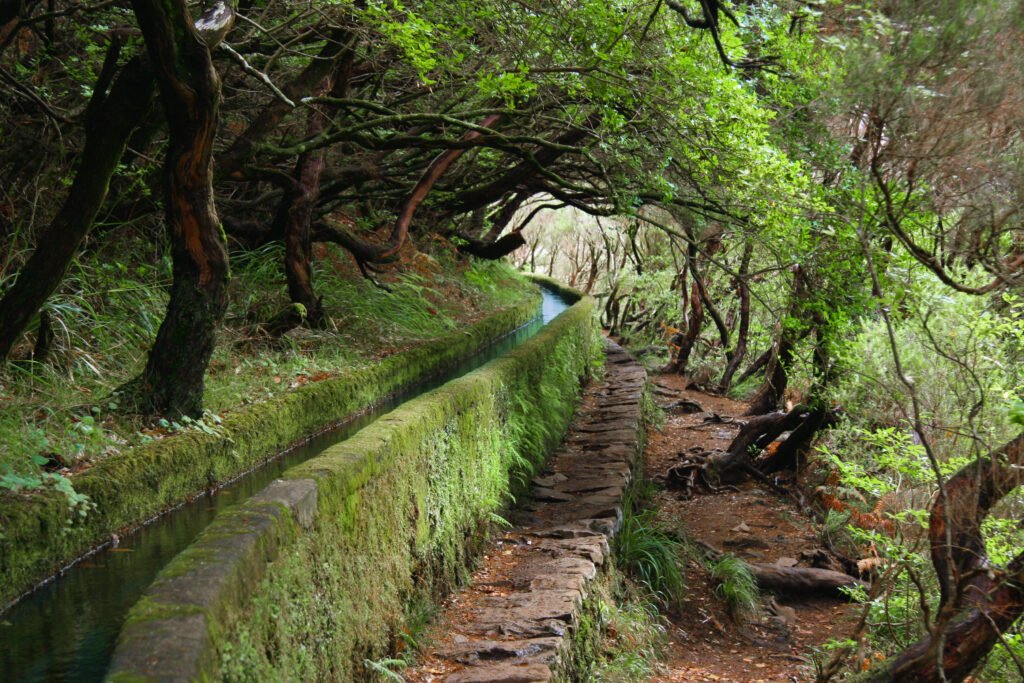
#6 Lake Koman Ferry & Peaks of the Balkans, Albania – Boat Rides and Borderless Trekking
Overview
Lake Koman, in northern Albania, looks like a fjord. Boats glide between steep cliffs and tiny farms. Up Albania’s Peaks of the Balkans trekking program points out that this boat ride is the start of a wider journey through three countries—Albania, Kosovo and Montenegro. After the ferry, you can hike to villages like Valbona and Theth, staying in guesthouses and learning about local culture. Sections of the trail range from easy strolls to long mountain passes.
Budget Tips
- Costs: The public ferry costs €10–€15; guesthouses cost €30–€40 with meals.
- Gear: Bring cash; villages have no ATMs.
- Further planning: See details for private guided Peaks of the Balkans routes featuring the Komani ferry if you prefer organised support.
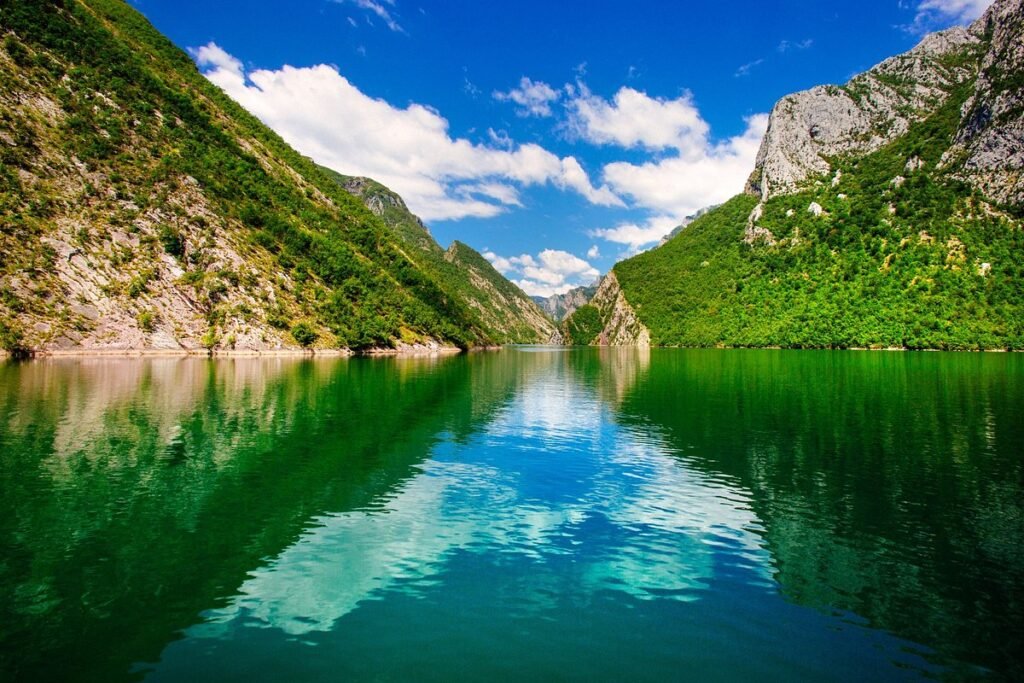
#5 Durmitor National Park & Tara Canyon, Montenegro – High Peaks and Deep Gorges
Overview
Durmitor’s rugged landscape includes sharp peaks, glacial lakes and high pastures. Bobotov Kuk, the highest point, can be climbed in a day. Tara Canyon, part of the same park, is Europe’s deepest. You can raft its rapids or walk along its rim. Many travellers base themselves in Žabljak, a small mountain town with cabins and hostels.
Budget Tips
- Stay: Basic cabins cost €20–€30; larger hotels cost more.
- Transport: Buses from Podgorica reach Žabljak, but renting a car adds flexibility.
- Season: June–September for hiking; spring for rafting.
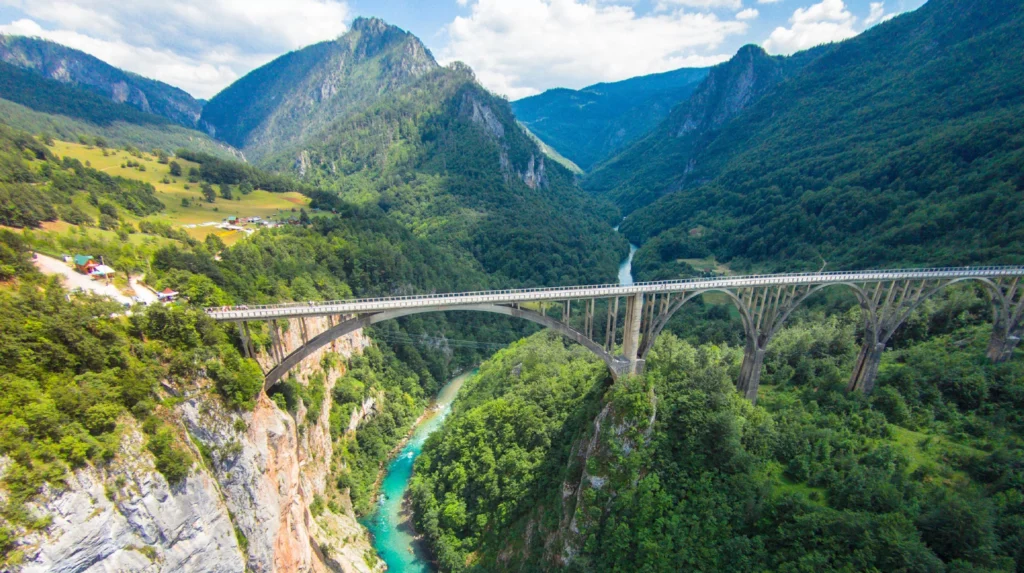
#4 Osum Canyon & Gashi River, Albania – Dramatic Cliffs and Hidden Waterfalls
Overview
Osum Canyon, near the city of Berat, is one of Albania’s natural wonders. Up Albania’s adventure blog describes its tall, narrow walls and seasonal waterfalls—especially stunning in spring when snowmelt turns the river emerald. In summer, the water drops, allowing hikes through the canyon and swims in hidden pools. In the far north, the Gashi River flows through a protected biosphere reserve, offering calmer rafting and wild scenery.
Budget Tips
- Trips: Rafting runs €45–€60; hiking tours are cheaper and sometimes free if self‑guided.
- Stay: Budget rooms in Berat start at €15; homestays in nearby villages can be as low as €10.
- Planning: Check water levels before you go; rafting is best from April to June.
Learn More
For a deeper dive into planning, explore white‑water rafting experiences through Osum Canyon and the Gashi River.
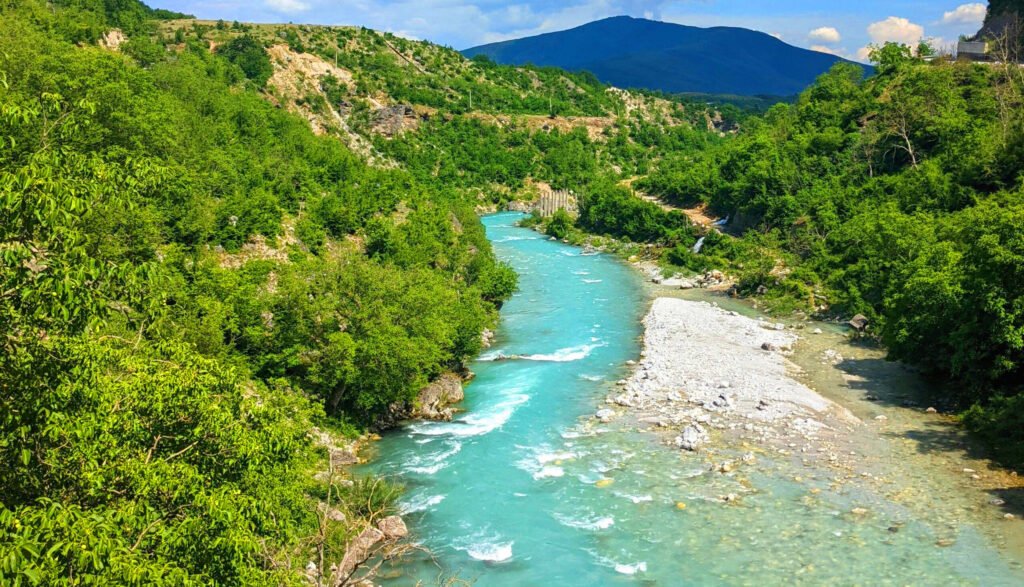
#3 Picos de Europa, Spain – Limestone Mountains and Hidden Hamlets
Overview
The Picos de Europa rise sharply from the green hills of northern Spain. Limestone peaks, deep gorges and traditional villages create an alpine feel close to the Atlantic coast. The Cares Gorge trail is a classic hike carved into a cliff face. Mountain refuges cost €20–€30, and country inns in towns like Arenas de Cabrales are affordable. Because three different regions share the park, transport can be tricky—renting a car saves time.
Budget Tips
- Stay: Mountain huts and small hotels offer cheap rooms.
- Eat: Taste Asturian cider and blue cheese.
- Season: June–September for hiking; spring and autumn are quieter but can be wet.
#2 Valbona–Theth Pass, Albania – Cultural Crossing in the Accursed Mountains
Overview
The Accursed Mountains form a natural border between Albania, Kosovo and Montenegro. The trail from Valbona to Theth is the country’s most famous hike. Up Albania’s guide calls it a cultural crossing: the 17‑km path links two isolated valleys where shepherds and families have walked for centuries. Limestone peaks tower above you, and the trail climbs to a pass near 1 800 m before dropping into Theth’s valley.
Budget Tips
- Stay: Guesthouses in Valbona and Theth charge €25–€35, including meals.
- Access: Take the Lake Koman ferry to Fierza, then a minibus to Valbona.
- Guides: If you prefer a planned trip, consider guided trekking tours in the Albanian Alps.
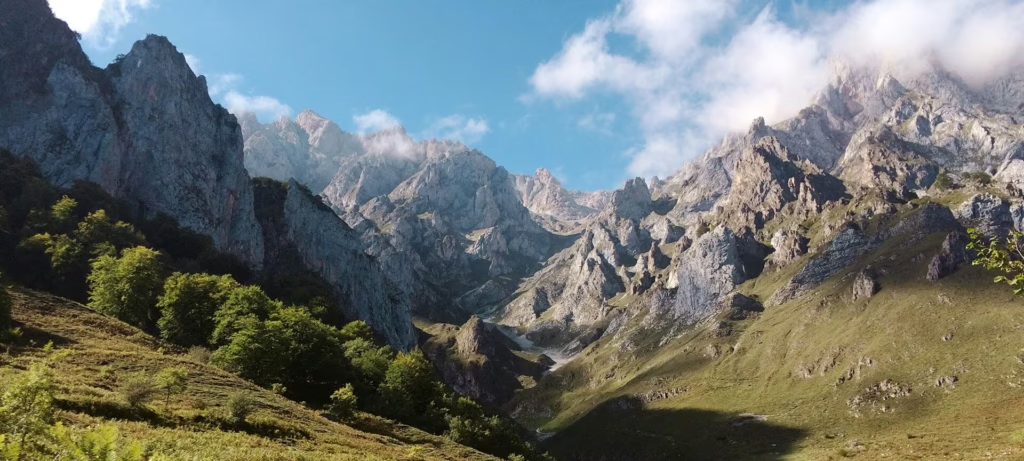
#1 High Tatras, Slovakia/Poland – Affordable Alpine Adventures
Overview
The High Tatras rise suddenly from the plains, offering alpine scenery without the usual prices. Peaks like Rysy (2 503 m) and Gerlachovský štít (2 655 m) attract hikers and climbers. Well‑marked trails, mountain huts and cable cars make access easy. Hostels and huts cost €20–€30 per night. Mountain resorts such as Tatranská Lomnica and Štrbské Pleso provide lodging, restaurants and gear rentals.
Budget Tips
- Transport: Use the electric train (Tatra Electric Railway) to move between towns; day tickets are cheap.
- Food: Order a plate of halušky (potato dumplings) for an inexpensive local meal.
- Season: June–September for hiking; November–April for skiing.
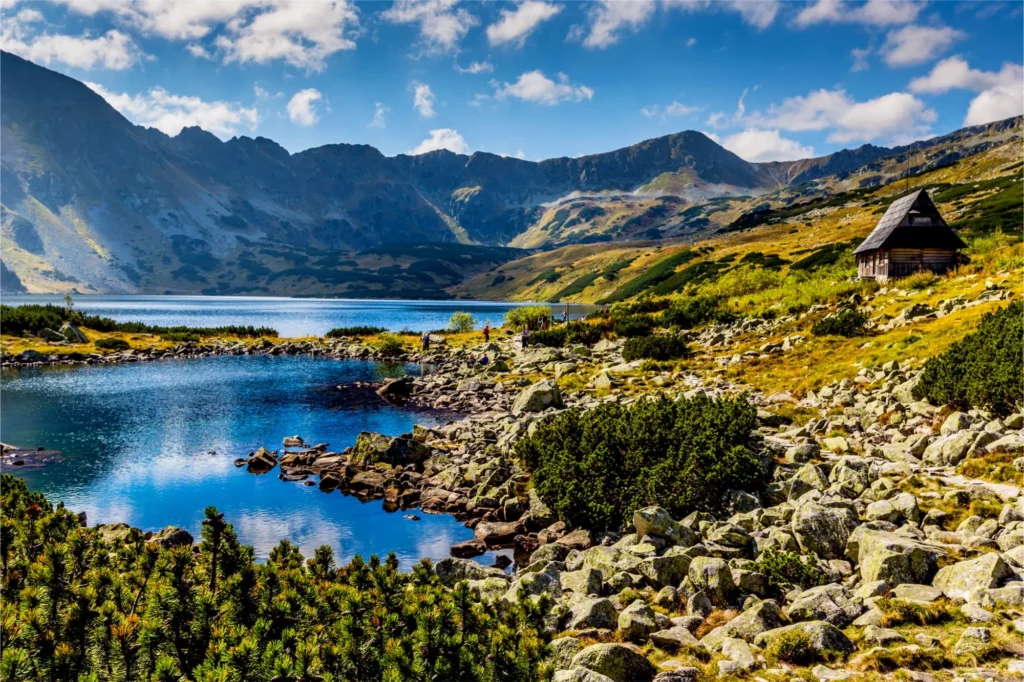
Conclusion: Plan Your Budget Adventure
These 21 destinations show that you can have a memorable adventure in Europe without spending a fortune. Choose the region that suits your interests—mountains, rivers or coast—and plan around local seasons to save money. Stay in family‑run guesthouses, use public transport where possible and pack smartly. If you need help arranging logistics, look into curated adventure itineraries that bundle transport, guides and lodging into one package. And if history and culture appeal to you, consider adding a UNESCO city tour of Berat and Gjirokastra to your itinerary for a deeper look at Albania’s stone cities and traditions.
Wherever you roam, remember: adventure is about the journey as much as the destination. Keep your travels simple, respect local communities and enjoy Europe’s wild places.
